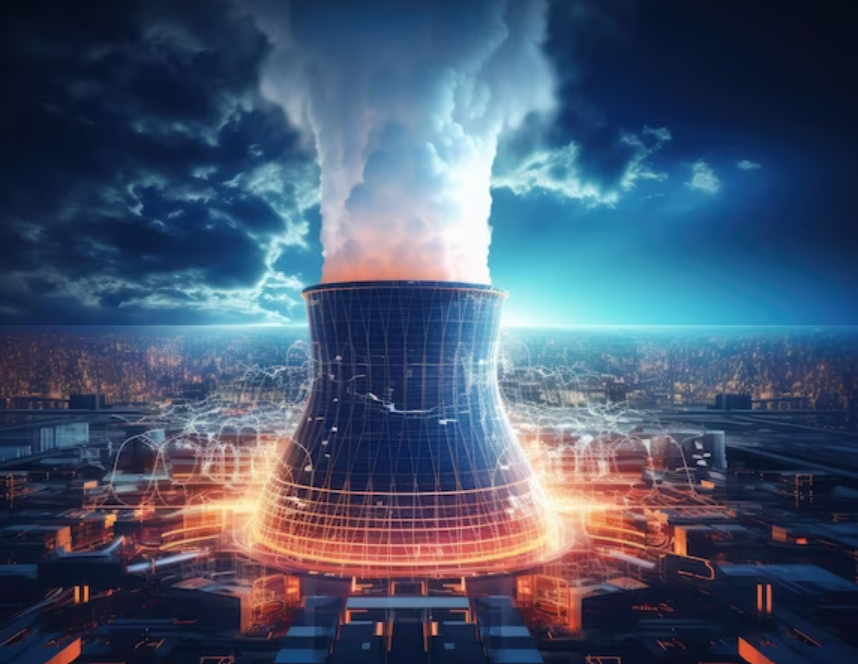The rapid expansion of nuclear energy in Asia brings both opportunities and challenges. While it promises a cleaner energy source, the potential health risks cannot be ignored. This article provides “Health Implications of Asia’s Nuclear Energy Expansion: A Critical Overview,” exploring the various health concerns associated with the growth of nuclear energy in the region.
Health Implications of Asia’s Nuclear Energy Expansion: A Critical Overview
The expansion of nuclear energy across Asia is driven by the need to meet growing energy demands while reducing carbon emissions. Countries like China, India, Japan, and South Korea are heavily investing in nuclear technology. However, the health implications of this expansion are significant and multifaceted.
Health Implications of Asia’s Nuclear Energy Expansion: A Critical Overview
The potential health risks linked to nuclear energy can be broadly categorized into radiation exposure, nuclear accidents, and long-term environmental impacts. Each of these areas presents unique challenges that require careful management and oversight.
Radiation Exposure
Radiation exposure is one of the most immediate concerns associated with nuclear energy. Workers in nuclear power plants and nearby residents are at risk of exposure to harmful levels of radiation. Prolonged exposure can lead to serious health conditions, including:
- Cancer: Radiation is a known carcinogen, and prolonged exposure increases the risk of various types of cancer, particularly leukemia, thyroid cancer, and breast cancer.
- Genetic Damage: Radiation can cause mutations in DNA, potentially leading to genetic disorders and birth defects in future generations.
- Acute Radiation Syndrome (ARS): In the event of high exposure, individuals may suffer from ARS, characterized by nausea, vomiting, and even death in severe cases.
Nuclear Accidents
Nuclear accidents, while rare, have catastrophic consequences. The most notable examples include the Chernobyl disaster in 1986 and the Fukushima Daiichi disaster in 2011. These incidents highlight the potential for widespread environmental contamination and long-term health effects.
- Short-term Health Effects: Immediate health impacts of a nuclear accident can include radiation burns, acute radiation sickness, and an increase in the incidence of thyroid cancer among exposed populations.
- Long-term Health Effects: Long-term impacts include increased rates of cancer, cardiovascular diseases, and mental health issues such as anxiety and depression due to the trauma and displacement caused by the disaster.
Environmental Impacts and Indirect Health Risks
The environmental impacts of nuclear energy can indirectly affect human health. Radioactive waste disposal and contamination of water sources pose significant risks.
- Water Contamination: Leaks from nuclear plants or improper disposal of nuclear waste can contaminate water supplies with radioactive materials. Consumption of contaminated water can lead to internal radiation exposure, affecting organs and tissues.
- Soil Contamination: Radioactive materials can remain in the soil for years, affecting agriculture and the food supply. Crops grown in contaminated soil can accumulate radioactive elements, posing risks to consumers.
Mitigating Health Risks
Given the potential health risks, it is crucial to implement robust safety measures and regulatory frameworks to protect both workers and the public. Here are some strategies to mitigate these risks:
Strict Safety Protocols
- Worker Safety: Ensure that workers in nuclear plants follow strict safety protocols, including the use of protective gear and regular health check-ups to monitor radiation exposure levels.
- Emergency Preparedness: Develop comprehensive emergency response plans to manage potential nuclear accidents efficiently. This includes evacuation plans, distribution of iodine tablets, and public education campaigns.
Advanced Technology
- Improved Reactor Designs: Invest in advanced reactor designs that incorporate passive safety features, which can automatically shut down the reactor in case of an emergency, reducing the risk of accidents.
- Radiation Monitoring Systems: Implement advanced radiation monitoring systems around nuclear facilities to detect leaks early and prevent environmental contamination.
Regulatory Oversight
- Stringent Regulations: Governments must enforce stringent regulations for the construction, operation, and decommissioning of nuclear plants. Regular inspections and audits can ensure compliance with safety standards.
- Transparent Reporting: Promote transparency in reporting radiation levels and any incidents at nuclear facilities. This builds public trust and ensures timely action in case of any breaches.
Conclusion
In conclusion, “Health Implications of Asia’s Nuclear Energy Expansion: A Critical Overview” highlights the dual-edged nature of nuclear energy. While it offers a solution to energy demands and climate change, the potential health risks cannot be overlooked. By implementing strict safety protocols, advanced technology, and robust regulatory oversight, it is possible to mitigate these risks and harness the benefits of nuclear energy safely.
FAQ
Q: What are the primary health risks associated with nuclear energy?
A: The primary health risks include radiation exposure, potential nuclear accidents, and long-term environmental contamination affecting water and soil.
Q: How can radiation exposure affect health?
A: Radiation exposure can lead to cancer, genetic mutations, acute radiation syndrome, and other serious health conditions.
Q: What measures can mitigate the health risks of nuclear energy?
A: Implementing strict safety protocols, investing in advanced technology, and ensuring stringent regulatory oversight can help mitigate health risks.
Q: Are nuclear accidents common?
A: Nuclear accidents are rare but can have catastrophic consequences when they do occur. Ensuring robust safety measures can minimize the risk.
Q: How does nuclear energy compare to other energy sources in terms of health risks?
A: While nuclear energy poses specific health risks related to radiation, it produces significantly lower air pollution compared to fossil fuels, which can have substantial health benefits in reducing respiratory and cardiovascular diseases.
By understanding and addressing these health implications, Asia can continue to develop its nuclear energy capabilities while ensuring the safety and well-being of its population.



